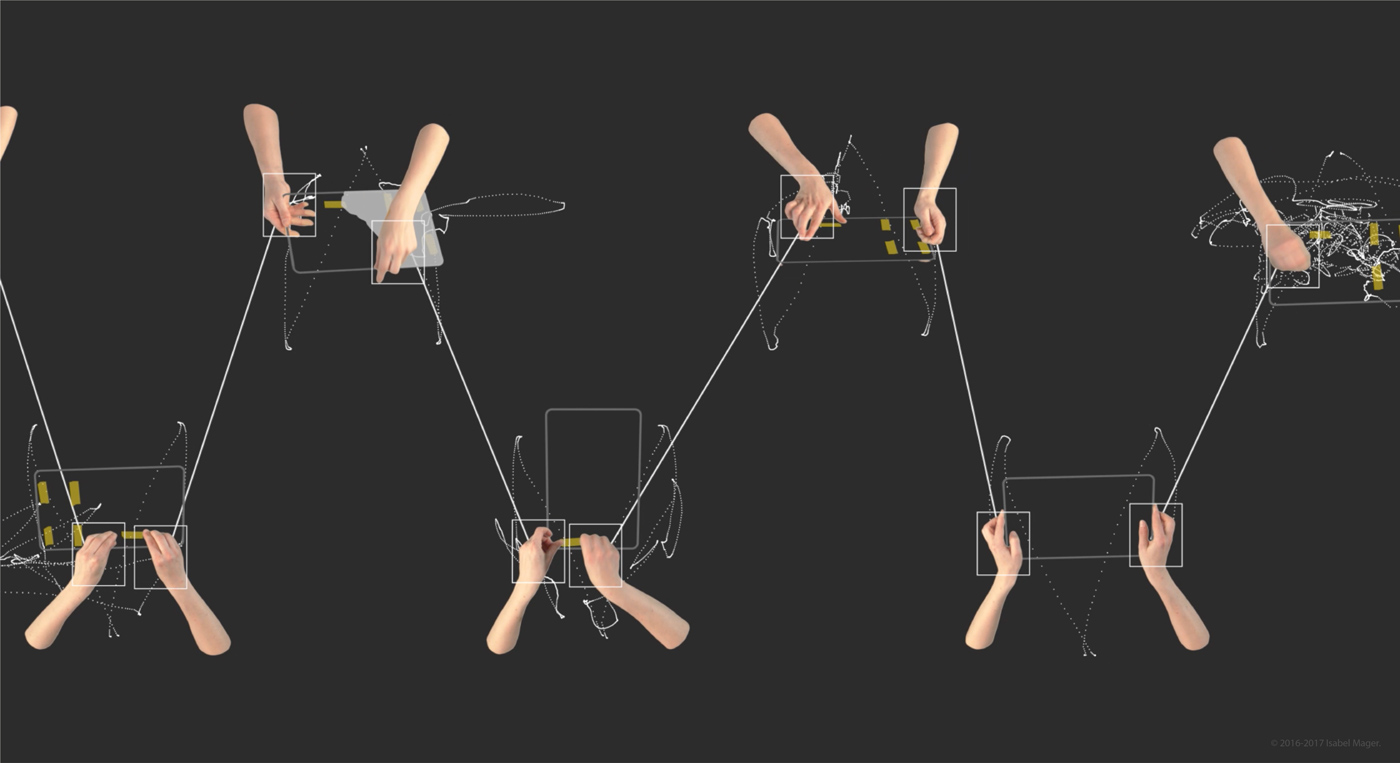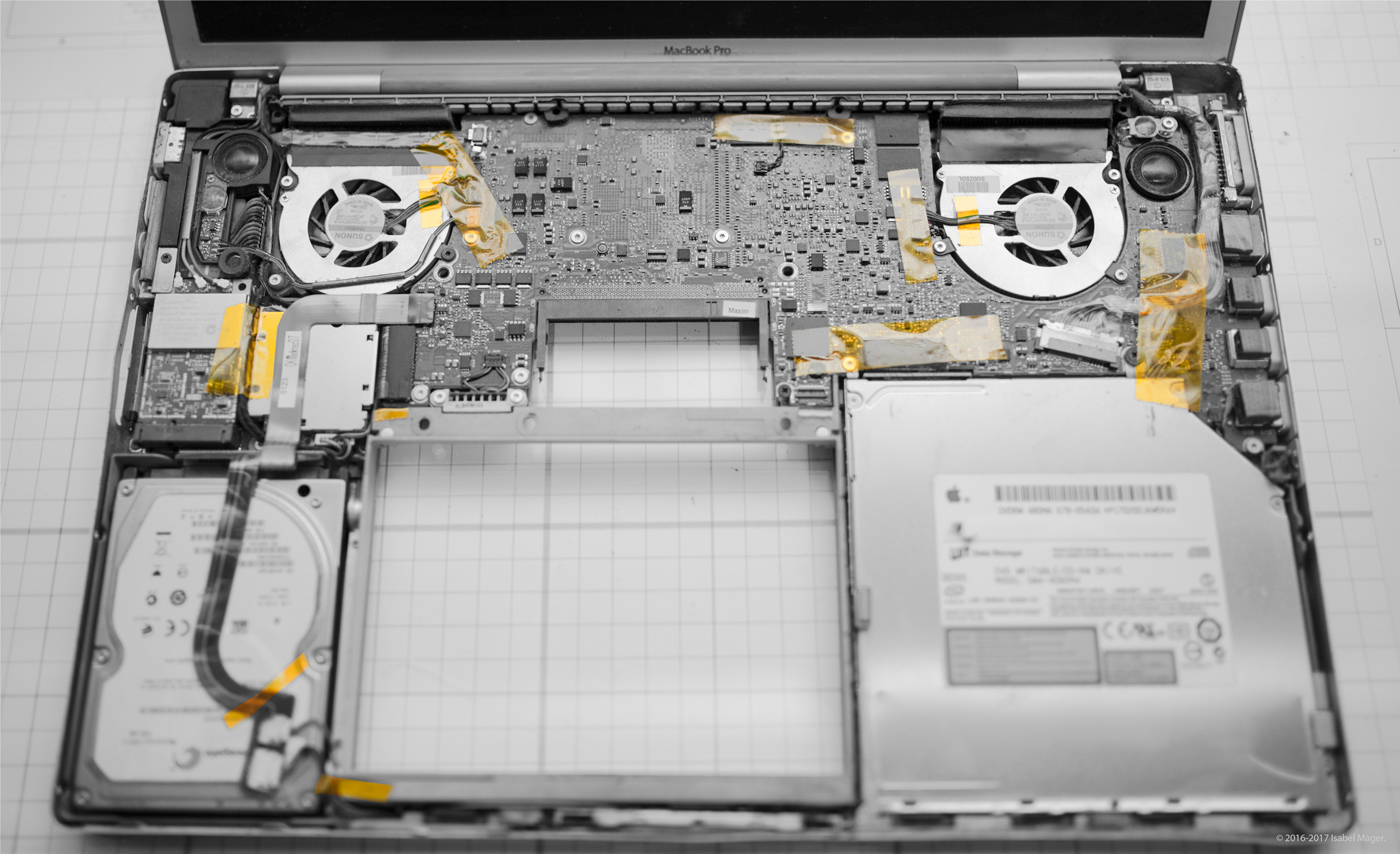In 5000times, designer Isabel Mager visualizes the repetitive tasks performed by the people who put together our iPhones and iPads.
Few iPhone users realize when they go to snap a photo that someone in a factory in Shenzhen, China, spends entire days doing that exact action to check image quality. According to an analysis by Dutch designer Isabel Mager, one factory worker will take 3,600 images a day doing this work. That worker’s neighbor might have the task of soldering pieces together, a task enacted 2,160 times per day, or marking areas for assembly, which is done an average of 4,800 times a day. Once assembled, iPhones perform the most basic tasks for us—but their production is almost entirely performed by human hands.
Using online video footage from inside Foxconn, the manufacturer that assembles Apple iPhones and iPads in Shenzhen, Mager tallied up these numbers and those of six more manually performed tasks that go into the assembly of our most ubiquitous high-tech devices. She then visualized the process in animated video called 5000times, now showing at the Science Gallery in Dublin as part of the exhibition Humans Need Not Apply. In a reversal of Apple’s core design tenant of considering the end user, Mager asks users to consider the human laborers behind the device who spend long days tediously performing one task.
The figures Mager represents in her video are estimates; Foxconn, which also serves consumer electronic companies like Dell, Motorola, and Sony, is notoriously secretive about what goes on inside its factory. In 2010, a series of suicides by Foxconn factory workers drew media attention to the factory’s dismal working conditions. Since then, several industry studies and investigative journalism have reported on its inner workings, but there still isn’t much information on what exactly workers do day in and day out. “I started my research because I thought if there are so many people in these factories, what is their exact job?” says Mager. “And is it something a robot cannot do?”
The first thing Mager did to embark on her research was to take apart a MacBook Pro in an effort to understand how it was put together. She noticed immediately pieces of bright yellow Kapton tape dotting the inside of the device. The tape is commonly used on circuit boards as insulation so there’s no interference with other devices. The pieces of tape inside Mager’s computer were cut at different sizes and they had the zigzag edge of a tape dispenser. “That’s when I thought, ‘There is at least one person in the factory whose job is to simply place tape,'” she says.

Information online was scant, so Mager started looking up videos posted online by the few journalists or engineers granted access inside the factory. If the video featured a worker performing a task, Mager would catalog the steps and document how long it took to complete. She then calculated roughly how many times the worker could perform the task at that speed in a 12-hour period. (According to Mager’s research, shifts last anywhere from 10 to 18 hours, so she took the average.) In the video, she recreates the movements in a choreographed assembly line for viewers.
Mager admits that she doesn’t have a full rundown of the steps that go into making an iPhone or iPad, nor does she claim that the numbers are 100% accurate. A line at the end of the video explains as much. The point is to visualize the volume of mindless, repetitive work that goes into the making of devices that are so ubiquitous and so embedded into some societies that they feel like necessities. The simplicity of the video is a nod to Apple’s aesthetic, and the hands in the video are Mager’s. She opted not to default to that common image of Chinese factory workers, for fear that it would be easy for Westerners to disassociate from.
“I didn’t want it to capture this human subjectivity in my work because if I add too much identity in here then I add another layer that will let people say, ‘This is in another context, it’s not here,'” she says. “I wanted to bring these things into the context where we are, as users of the product and designers of the product.”

Prior to the exhibition at Science Gallery, Mager also showed the video at design festivals like Dutch Design Week and Design Indaba. Most of the feedback she’s gotten has been positive—other designers and academics are largely appalled at the jobs in these factories and want to know how they can help. Yet while the conditions within the factories could be solved by pressuring Foxconn to enforce a more humane work environment, the issue surrounding manual assembly and automated factories isn’t quite as straightforward. Eliminating thousands of people’s jobs entirely isn’t the best option, and as Mager points out, for many factories making high-tech products, automating the workflow isn’t feasible or cost-effective. Technology changes so rapidly, it’s easier to train people on a variation of tasks with each new version of the iPhone, rather than to rewrite the software and install new hardware on machines.
Mager is continuing to work on the project, and is talking with experts in fair production practices and engineers with familiarity of assembly-line procedures to inform her next step. In the meantime, she points to the cost breakdown of an iPhone 6s Plus, which retails at $650 through Apple, with the cost to make the phone totaling about a third of that price. The cost for workers’ wages in building one, according to Business Insider, is around $11, or 2% of the final retail price. Taking a figure from ABC News, which reports that around 325 people will work on one iPad, Mager estimates at least that many people work on the iPhone 6s Plus.
That’s how far that $11 for wages stretches per device. Not many users would notice if you tacked that amount to the price of an iPhone, but for the workers on the other end of the equation, their wages would double.
–
[All Images (unless otherwise noted): Isabel Mager]
This article first appeared in www.fastcodesign.com
Seeking to build and grow your brand using the force of consumer insight, strategic foresight, creative disruption and technology prowess? Talk to us at +9714 3867728 or mail: info@groupisd.com or visit www.groupisd.com

